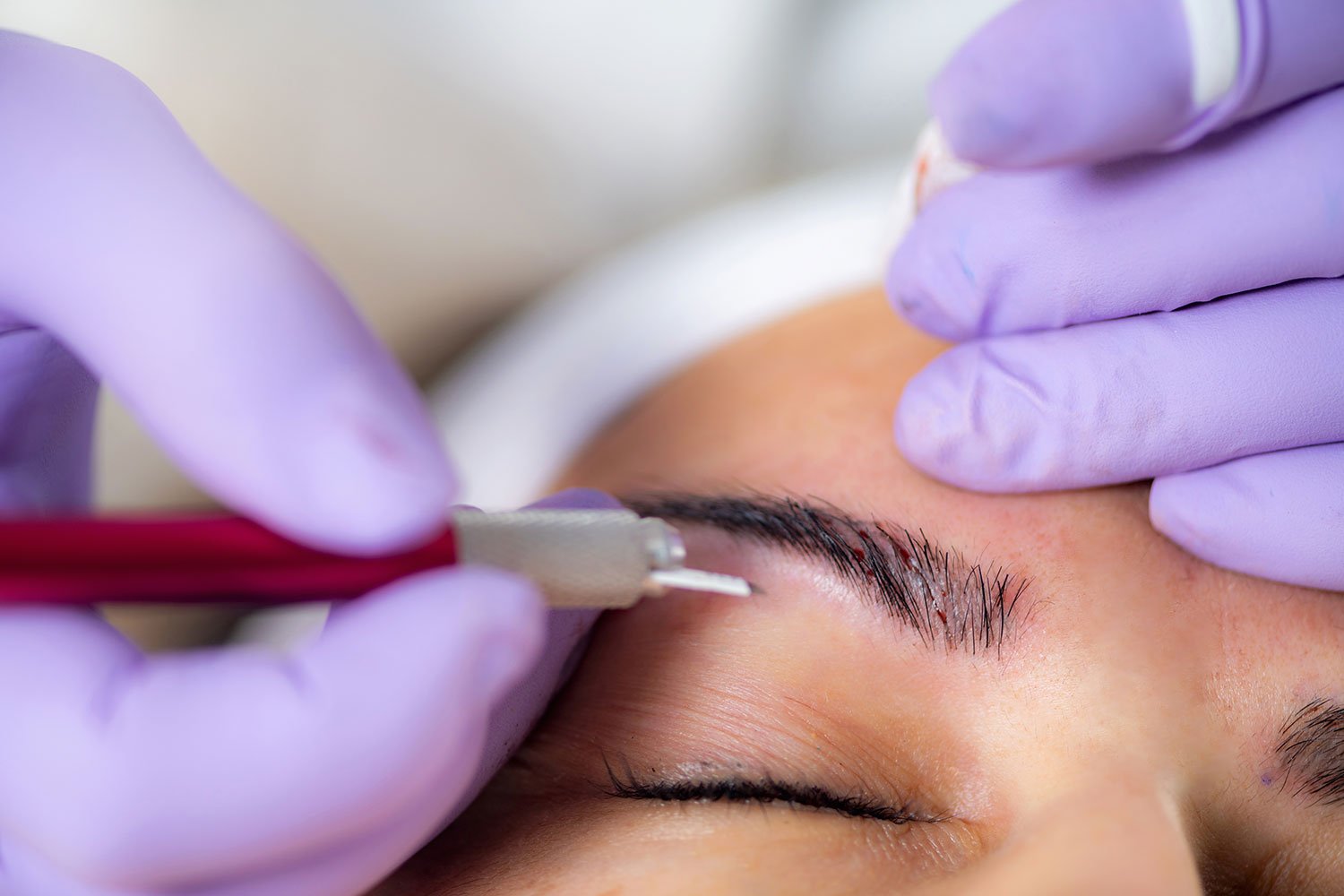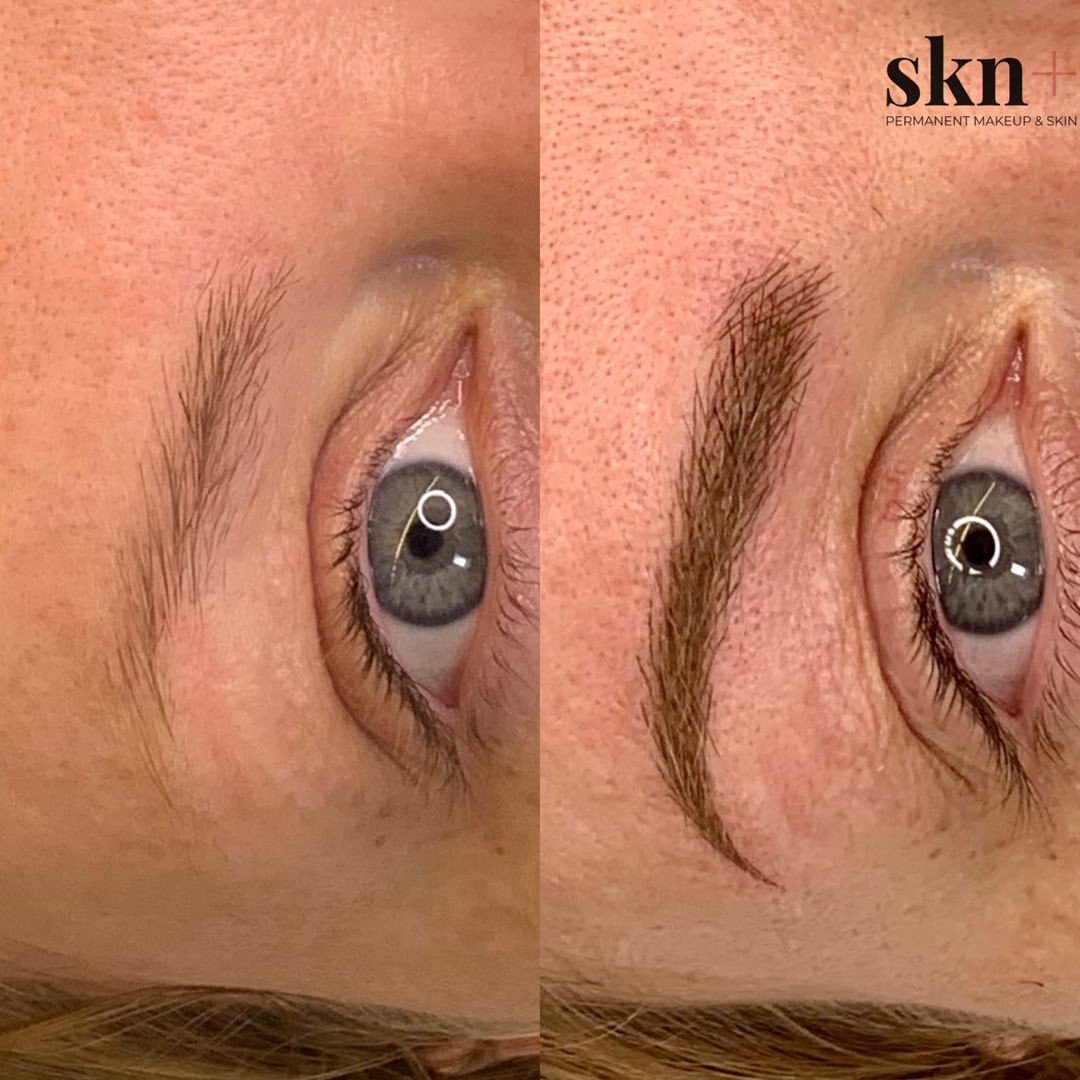Microblading VS Permanent Makeup: What’s The Difference?
Looking at pictures of brows on Instagram, it can often be hard to tell the difference between Microblading and Permanent Makeup, and whilst there are a lot of similarities there are also a few key differences. Keep reading to find out!
1. What is Microblading
Its safe to say that Microblading has been a bit of a ‘buzz word’ in the industry - it’s probably one of the most requested brow treatments, but a lot of people don’t know much about it and there’s a lot of misinformation out there so let's cover the basics first!
Microblading is a means of implanting pigment into the skin, and is designed to enhance your brows to achieve a better shape, more definition and to make your beauty routine easier. To create these brows a hand tool and you’ve guessed it- it's called a microblade! On the end of this tool you can find tiny needles that are fixed together in a line which deposit pigment into the skin leaving behind those beautiful, natural-looking hair strokes that are so sought after.
2. How is it different from Permanent Makeup?
It’s not - Microblading is actually a form of Permanent Makeup. Anything that involves implanting pigment into the skin to achieve a makeup effect would be classed as Permanent Makeup, the method of application doesn’t really matter. So whether your artist chooses a microblading tool or a digital machine (which is what I use) to create your brows, BOTH are types of Permanent Makeup and BOTH are forms of eyebrow tattoo!
There are a lot of artists out there who like to compare the two methods, often slating the method they don’t use, in a bid to convince their clients that their method gets the best results - but it's simply not true! Both methods give equally beautiful results BUT, the results depend entirely on the artist's skill and not what tools they use.
Key similarities include:
Both can achieve stunning, natural-looking results
Both use the same pigments
Both can create hairstrokes AND shading, like combination or ombre brow styles
Both involve implating pigment into the skin
Both include the same risks
Both depend entirely on the skill of the artists to produce good results
Key differences include:
Microblading uses a hand tool, whereas digital machine is powered by electricity
Some skin types may be better suited to digital machine over microblading (but again it depends on your artists skill level)
Digital machine is a harder skill to master
And that's literally it, when performed by artists who are experienced and skilled in their craft the difference between Microblading and digital machine brows is virtually undetectable.
Image source: Instagram @sknplus
3. How does the application process differ?
A microblade is a manual tool that houses a blade, the artist uses this to make tiny cuts into the skin depositing pigment as it goes. A digital machine powers a needle cartridge that punctures tiny holes into the skin to deposit pigment.
The depth of application within the skin is the same whichever technique is used. The skin is composed of 3 layers; epidermis (top), dermis and subcutaneous. All PMU techniques deposit pigment at the bottom of the epidermis, at the dermal junction.
How long does the treatment take?
Usually microblading is slightly quicker than ombre brows for example - microblading could take up to 2 hours, ombre brows could take up to 3 hours.
4. Which is more painful?
Both procedures may result in some minor discomfort, the skin is being broken so this is to be expected. However after speaking to my clients who’ve had both microblading and machine brows, the majority of people find the machine to be less painful.
Either way whichever method is used the discomfort is minimal, and most artists use topical numbing agents to ensure you feel as little pain as possible.
5. Which one gives the best results?
Now as I already mentioned, both Microblading and machine can give amazing results and it’s simply not possible to determine one technique better than the other. But there are a few things to consider…
Generally speaking, brows created with a digital machine can be slightly longer lasting that microbladed brows BUT there are many other factors that affect the longevity of your results. Your skin type, the pigments used and the depth at which your artist implants the pigments will all have an impact. Any pigment that is implanted too deep within the skin, regardless of the technique, will take much longer to fade and will not yield natural looking results. Similarly if your artists implant the pigment too superficially within the skin, either by microblade or machine, those results will not hold.
Many artists like to claim that Microblading is the best tool for creating those super fine hair strokes that look realistic, when again this all comes down to your artist's skill. Just because you’re going for microbladed brows, DOES NOT mean you will get those natural results. Equally fine, realistic hair strokes can be created with a machine - I always tell my clients that the results are exactly the same, it's just a different application method.
One major thing to consider though is your skin type, it is much harder to get good results with microblading in oily, thicker skin types. Hairstrokes in general can be tricky for this skin type, and typically we would advise clients to opt for a combination (like the one in the picture below) or an ombre in order to get the best results possible. With that being said, hair strokes in oily skin types aren’t a complete no-go, just be aware that your brows may fade quicker than you'd hope for. I can only hope that each individual artist is honest enough with their clients to recommend an alternative service if the one the client is asking for is not suitable.
Quick tip: Whichever method you choose, always make sure you thoroughly research your artist, check for pictures of their healed work and make sure to communicate properly so they understand your needs and desired result.
Image source: Instagram @sknplus
6. The Takeaways
My main piece of advice would be to choose an artist based on their results and not necessarily how they create them. Good healed results are a combination of so many things… from pigment choice, to skin type, to artist skill level and the techniques they choose, and these are all things to consider when choosing your brow artist. A good artist should be able to discuss the pro’s and con’s of each treatment and give honest advice on which treatment would be best suited to you, whether they offer that treatment or not!
Share this post











